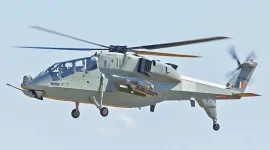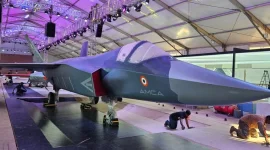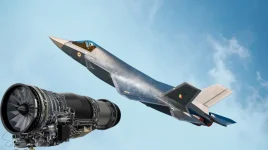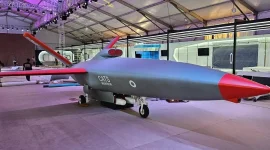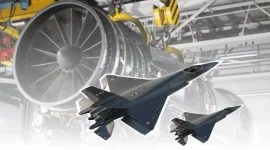- Views: 185
- Replies: 3
Bharat Earth Movers Limited (BEML), a key public sector company operating under India's Ministry of Defence, has announced plans to develop a new Wheeled Armoured Fighting Vehicle (WhAFV) equipped with an Anti-Tank Guided Missile (ATGM) system.
The company is seeking partners for this joint development project, which falls under the government's Buy (Indian-Indigenously Designed, Developed, and Manufactured - IDDM) procurement category.
This initiative, detailed in an Expression of Interest (EoI) document (Ref: CTP&AM/EoI/SM/2025), supports India's goals of self-reliance ('Atmanirbhar Bharat') and domestic manufacturing ('Make in India') by aiming to provide the Indian Army with advanced defence systems made within the country.
The development comes as the Indian Army continues its efforts to modernize its equipment, replacing older vehicles and improving its ability to operate effectively in various conditions.
The planned WhAFV is expected to be an 8x8 wheeled vehicle designed for high mobility across different landscapes, including deserts and mountainous areas.
When combined with a modern ATGM system, this vehicle aims to give the Army a flexible and powerful tool to counter enemy tanks and fortified structures. This need is underscored by the ongoing security considerations along India's borders, such as the Line of Actual Control (LAC) and the Line of Control (LoC).
Procurement under the Buy (Indian-IDDM) category, established in the Defence Procurement Procedure (DPP) 2016, gives preference to equipment that is designed, developed, and manufactured within India, requiring a minimum of 40% locally sourced content.
BEML's invitation for partnership is open to both Indian and international companies, seeking technology collaboration to meet these IDDM standards while incorporating global expertise.
BEML has a history of supplying essential defence equipment, such as High Mobility Vehicles, Armoured Recovery Vehicles, and specialized ground support vehicles for missile programs.
While specific technical details have not been finalised, the new WhAFV is anticipated to incorporate modern technology based on the Army's requirements and previous Requests for Information (RFIs), like the one issued in 2019 for similar vehicles. Key features are likely to include:
- Mobility: An 8x8 wheel configuration for excellent cross-country travel, independent suspension, adjustable tyre pressure (central tire inflation), and a powerful engine (estimated 600-700 hp) allowing speeds over 80 km/h on roads.
- Protection: Armour plating meeting STANAG Level 4 standards, specially designed seats to protect against blasts, and potentially an Active Protection System (APS) to intercept threats like missiles. Systems to counter drones and laser targeting are also expected.
- Firepower: A turret, possibly remotely operated, armed with a 30-40 mm main gun, a machine gun, and the ATGM launcher. The missile itself is expected to be a 'fire-and-forget' type with a range of 4-5 km, capable of attacking targets from the top or directly.
- Electronics: Advanced systems including Artificial Intelligence (AI) for battlefield management, real-time situational awareness linking various units, and drone integration. Night vision, GPS, and secure communications are standard requirements.
The MPATGM is known for its 'fire-and-forget' capability, infrared seeker, 4 km range, and ability to strike tanks on their vulnerable top armour. Adapting such technology for the WhAFV would provide precise firepower against armoured threats.
BEML's search for partners aims to facilitate technology transfer and establish indigenous manufacturing capabilities for these advanced systems. This collaborative model is similar to strategies used in other major Indian defence projects, such as the Futuristic Infantry Combat Vehicle (FICV) and Future Ready Combat Vehicle (FRCV) programs, which have involved partnerships between Indian companies like Tata and Larsen & Toubro (L&T) and international defence firms.
This initiative represents another significant step in India's ongoing efforts to build a self-sufficient and modern defence industrial base.

